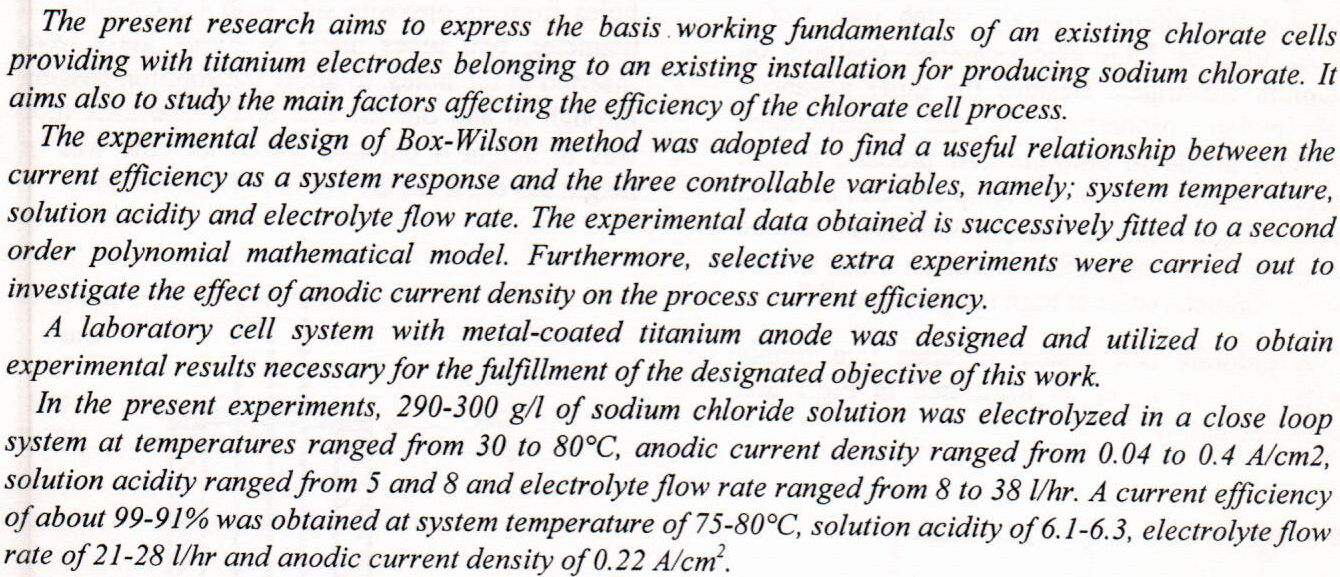
 (15)
(15)
 (12)
(12)
This study was conducted to estimate some heavy metals cadmium, lead, nickel and iron in 15 samples of Iraqi honey with 3 replicates for each sample which were collected from apiaries near potential contamination areas in five Iraqi governorates, including Baghdad, Karbala, Babylon, Diyala and Salah al-Din. The atomic absorption technique was used to estimate the concentrations of heavy metals, the results showed that there were significant differences at (P≤0.05) between the concentrations of these elements in the honey samples, the highest concentrations of cadmium 0.123 mg/kg were recorded in Baghdad, near the petrochemical production complex, lead 4.657 mg/kg and nickel 0.023 mg/kg in Babylon near the power plant, iron was
... Show MoreObjectives: To determine the contributing risk factors to adult nephrolithiasis patients.
Methodology: A descriptive study was conducted to determine the contributing risk factors to
Adults nephrolithiasis starting from December 2007 to September 2008. A purposive "nonprobability"
sample of (100) patients with nephrolithiasis was selected of those who were
admitted to the hospitals, attending the Urology Consultation Clinic and Extracorporeal Shock
Wave Lithotripsy Department. The study instrument consists of two parts. The first part is
related to the patients' demographic variables and the second part is constructed to serve the
purpose of the study. The total number of items in the questionnaire was (85) ones.
Adhesion (type 1 fimbriae) and host defense avoidance mechanisms (capsule or lipopolysaccharide) have been shown to be prevalent in Escherichia coli isolates associated with urinary tract infections. In this work, 50 uropathogenic Escherichia coli (UPEC) isolated from children with urinary tract infections were genotypically characterized by polymerase chain reaction (PCR) assay. We used two genes; fimH and kpsMTII, both of them previously identified in uropathogenic E.coli (UPEC) isolates. The PCR assay results identified fimH (90.0)% and kpsMTII (72.0)% isolates. In the present study, was also demonstrated that these genes may be included in both or one of them within a single isolate.
In this research, a study is introduced on the effect of several environmental factors on the performance of an already constructed quality inspection system, which was designed using a transfer learning approach based on convolutional neural networks. The system comprised two sets of layers, transferred layers set from an already trained model (DenseNet121) and a custom classification layers set. It was designed to discriminate between damaged and undamaged helical gears according to the configuration of the gear regardless to its dimensions, and the model showed good performance discriminating between the two products at ideal conditions of high-resolution images. So, this study aimed at testing the system performance at poo
... Show More (1)
(1)
 (1)
(1)
In this research, a study is introduced on the effect of several environmental factors on the performance of an already constructed quality inspection system, which was designed using a transfer learning approach based on convolutional neural networks. The system comprised two sets of layers, transferred layers set from an already trained model (DenseNet121) and a custom classification layers set. It was designed to discriminate between damaged and undamaged helical gears according to the configuration of the gear regardless to its dimensions, and the model showed good performance discriminating between the two products at ideal conditions of high-resolution images.
So, this study aimed at testing the system performance at poor s
... Show More (1)
(1)
 (1)
(1)
Multipoint forming process is an engineering concept which means that the working surface of the punch and die is produced as hemispherical ends of individual active elements (called pins), where each pin can be independently, vertically displaced using a geometrically reconfigurable die. Several different products can be made without changing tools saved precious production time. Also, the manufacturing of very expensive rigid dies is reduced, and a lot of expenses are saved. But the most important aspects of using such types of equipment are the flexibility of the tooling. This paper presents an experimental investigation of the effect of three main parameters which are blank holder, rubber thickness and forming speed th
... Show MoreIncremental sheet metal forming is a modern technique of sheet metal forming in which a uniform sheet is locally deformed during the progressive action of a forming tool. The tool movement is governed by a CNC milling machine. The tool locally deforms by this way the sheet with pure deformation stretching. In SPIF process, the research is concentrate on the development of predict models for estimate the product quality. Using simulated annealing algorithm (SAA), Surface quality in SPIF has been modeled. In the development of this predictive model, spindle speed, feed rate and step depth have been considered as model parameters. Maximum peak height (Rz) and Arithmetic mean surface roughness (Ra) are used as response parameter to assess th
... Show More (2)
(2)
 (6)
(6)
 (6)
(6)
In this study, simple, low cost, precise and speed spectrophotometric methods development for evaluation of sulfacetamide sodium are described. The primary approach contains conversion of sulfacetamide sodium to diazonium salt followed by a reaction with p-cresol as a reagent in the alkaline media. The colored product has an orange colour with absorbance at λmax 450 nm. At the concentration range of (5.0-100 µg.mL-1), the Beer̆ s Low is obeyed with correlation coefficient (R2= 0.9996), limit of detection as 0.2142 µg.mL-1, limit of quantification as 0.707 µg.mL-1 and molar absorptivity as 1488.249 L.mol-1.cm-1. The other approach, cloud point extraction w
... Show More (7)
(7)
